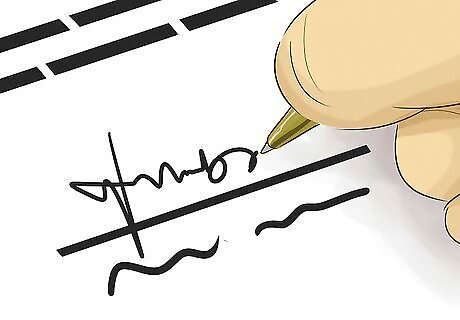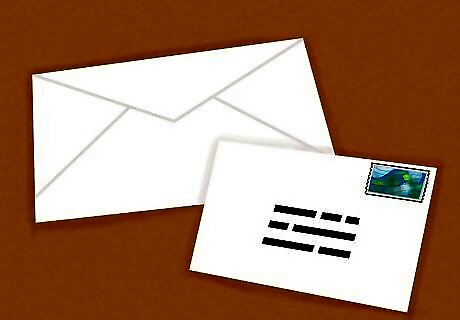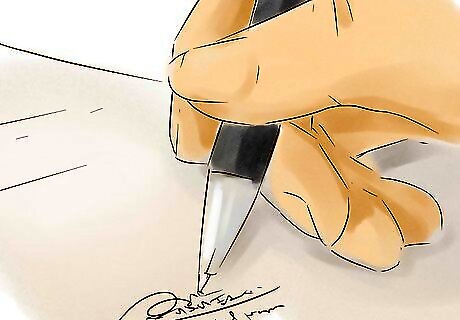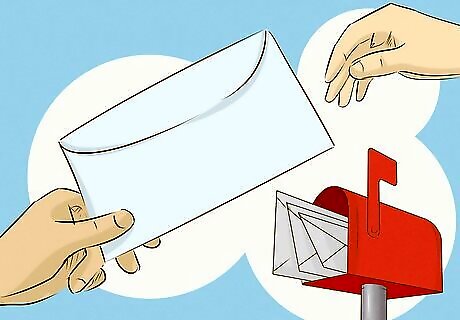
views
X
Trustworthy Source
Federal Trade Commission
Website with up-to-date information for consumers from the Federal Trade Commisson
Go to source
Filing With the Credit Bureau

Get contact information for the appropriate credit bureau. Typically the address or phone number you must use to dispute an item will be on your credit report or on the credit bureau's website. The credit bureau also may provide a way for you to dispute an item online. There are some benefits to this, including the convenience and the ability to check your account for status updates rather than waiting for a letter in the mail. You also can find contact information on each credit bureau's website. The websites of the three major credit bureaus are www.experian.com, www.transunion.com, and www.equifax.com. These websites include other information about filing a dispute including the information required to correctly identify yourself and the item you want to dispute.

Gather evidence. You will need documents or information to prove to the credit bureau that the listing is inaccurate. You may want to include a copy of the credit report where you found the inaccurate item. Make a copy to include with your dispute letter, and mark the inaccurate item by highlighting or circling it. To prove the inaccuracy of the information, compile any relevant statements, receipts, or cancelled checks and make copies. For example, if a creditor is reporting on your credit report that you have an account past due, but you paid the account in full and closed it, you could use a copy of your last statement from the creditor showing a zero balance as well as any letters you received confirming the account was paid in full and closed. In addition to accounts listed on your credit report, you also typically can dispute other information such as an incorrect name or address. Evidence to support this sort of dispute would include a copy of government-issued identification or your birth certificate.

Draft your dispute letter. You must notify the credit bureau in writing that you dispute an item on your report. Generally, you want to type your letter using standard business-letter format. Most word processing applications have a template for this format. The Federal Trade Commission (FTC) has a sample letter that you can adapt to your own situation. Go to http://www.consumer.ftc.gov/articles/0384-sample-letter-disputing-errors-your-credit-report and copy the sample letter into your word processing application. Make sure you change the bracketed words to reflect the correct information.

Finalize your letter. Proofread your letter for typos or other errors before you print and sign it. After you've signed your letter, make a copy of it for your records before you mail it off. Along with your letter, include copies of any of the documents you gathered to support your claim that the information is incorrect. Make sure you're sending copies and not originals – particularly for identification documents that may be difficult to replace.

Mail your letter to the credit bureau. Notifying one credit bureau typically is sufficient. If an error is found, it must notify the other major bureaus of the problem. You might want to mail your letter using certified mail with returned receipt requested, so you'll receive a notification when your letter is received by the credit bureau's complaints department.

Wait for a response. The credit bureau must investigate and report on your dispute, typically within 30 days. When it receives your dispute, it must forward all information to the individual or business that originally reported the information. The information provider will review the information and report back to the credit bureau regarding its accuracy. The credit bureau must send you the results of this investigation in writing. If the investigation resulted in a change to your credit report, it must include a free copy of your credit report for you to confirm the changes made. Keep in mind that if an item is incorrect in one report, it also may show up on your other two reports. While you're waiting for a response, you may want to check these reports and verify their accuracy. You are entitled to a free credit report once a year. If you haven't already taken advantage of this, you can get one of the other reports for free by visiting https://www.annualcreditreport.com. This site was created by the three major credit bureaus and is the only place approved by the federal government for requesting the free report you're guaranteed each year by law. If you've already received your free report, you will have to pay for additional reports. The credit bureaus are prohibited by law from charging you more than $12 for a copy of your credit report.

Follow up to make sure the information is corrected. Even if the credit bureau agreed to remove the item from your report, you must continue to monitor your report to make sure it doesn't return. Unfortunately, if the disputed information shows up on your report again, you'll have to go through the same dispute process to have it removed. However, once an item is changed or removed, the credit bureau can't put it back in your report unless the information provider verifies its accuracy. If the investigation doesn't resolve your dispute, you can ask the credit bureau to include a copy of your dispute with your report, so anyone who checks your report will know which items you've disputed. The credit bureau also may provide information regarding the dispute to anyone who's checked your credit report in the past six months. Keep in mind you may be charged a fee for this service.
Filing With the Information Provider

Get contact information for the company that reported the incorrect item. If you find an inaccurate item listed on your credit report that was reported by a company or individual, the reporter also has a responsibility to correct that information. Typically you can find an address for the information provider on your credit report. If no address is provided, you may have to contact the business or individual listed and find out where you should mail a letter disputing information on your credit report. If you are unable to contact the information provider, plan on sending your letter to any business address for the information provider that you can find. Unlike credit bureaus, most information providers only accept disputes through the mail – they don't have options for you to file your dispute online or over the phone.

Draft a dispute letter to the information provider. Even though the credit bureau should notify the information provider if you report the error to them, you should also write to the information provider directly. Format your letter in traditional business letter format. Most word processing applications have templates you can use. The FTC has a sample letter, available at http://www.consumer.ftc.gov/articles/0485-sample-letter-disputing-errors-your-credit-report-information-providers, that you can copy and paste into your word processing application. In your word processing application, replace the bolded words in brackets with the information that is applicable to your situation.

Print and sign your letter. Once you've proofread your draft, you're ready to send it to the company along with copies of any evidence of the inaccuracy. Include any and all evidence you have to back up your assertions, such as old statements, letters from the business, or cancelled checks – but make sure you send copies, not the originals, because you can't expect to get the originals back. Make a copy of your signed letter and everything you're sending with it before you mail it so you have it for your records.

Send your letter to the appropriate address. Once you've notified the company that you dispute the information in your credit report, the company has a responsibility to investigate the matter and remove or correct the information as necessary. Use certified mail with returned receipt requested to mail your letter, so you will know when the company receives notice of your dispute. Once the individual or business receives your dispute, it must notify all credit bureaus to which it reports that you have disputed the item. Information providers generally have between 30 and 45 days to investigate and respond to your dispute.

Follow up with the company. If the information provider continues to report to the credit bureau, it must have the incorrect item updated or removed. The information provider also is responsible for having the information updated or corrected on credit reports issued by any other credit bureau – not just the one that prompted your dispute – if it reports to more than one. Keep in mind that information providers aren't required by law to investigate some types of disputes, including disputes that involve the reporting of incorrect personal information such as your name, address, or Social Security number.


















Comments
0 comment